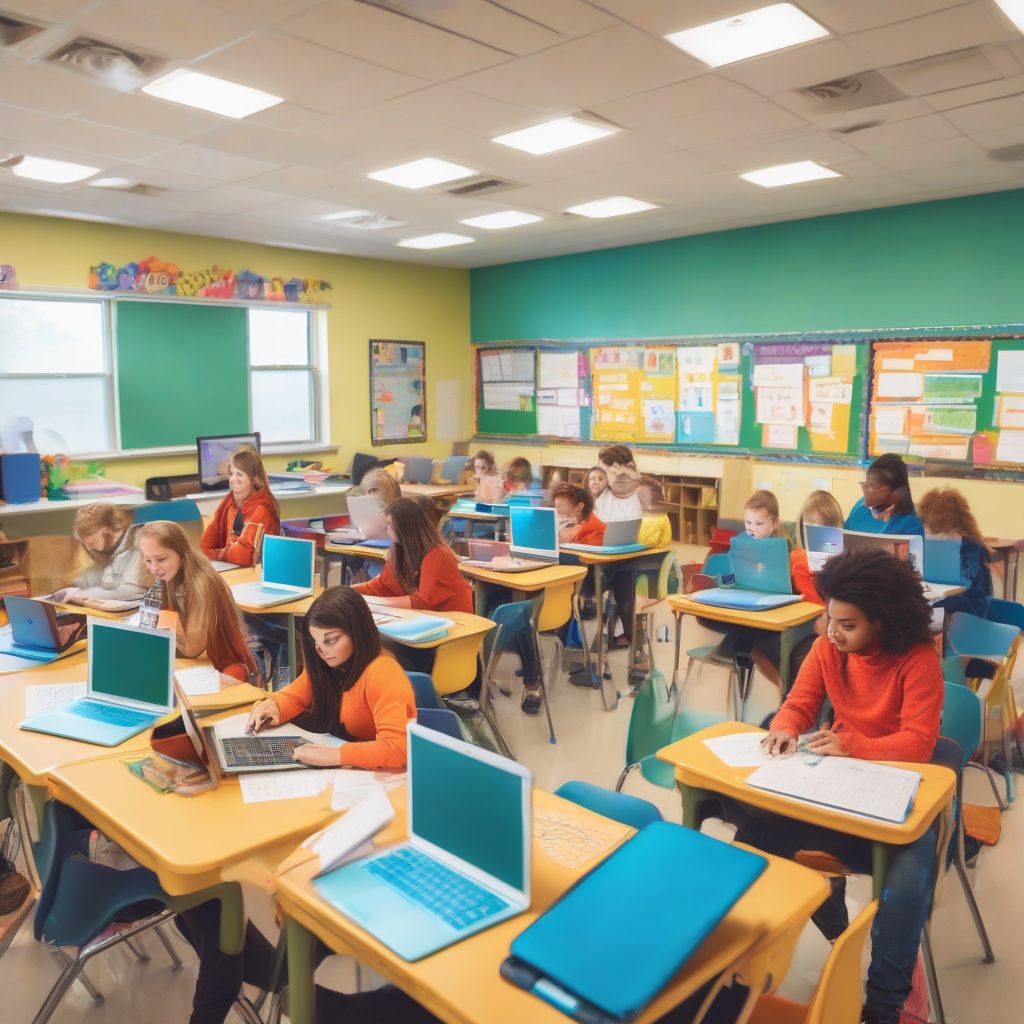Remember the days of dusty textbooks, passive lectures, and struggling to stay awake at the back of the classroom? Thankfully, those days are fading fast. Technology has revolutionized the way we learn, making education more engaging, accessible, and effective than ever before.
 Modern Classroom with Technology
Modern Classroom with Technology
Breaking Down Barriers: Access and Flexibility
One of the most significant impacts of technology on education is its ability to democratize learning. Geographic location, physical limitations, and time constraints are no longer insurmountable barriers.
- Online Learning Platforms: From massive open online courses (MOOCs) to virtual classrooms, learners can access high-quality educational resources from anywhere in the world, at any time. This flexibility is particularly beneficial for working professionals, individuals in remote areas, or those with disabilities who may face challenges with traditional learning environments.
- Digital Resources: Imagine having a library at your fingertips. Technology provides instant access to a wealth of information, including e-books, journals, research articles, and multimedia content. This abundance of resources empowers learners to explore their interests in depth and pursue personalized learning journeys.
Engaging Experiences: From Passive to Active Learning
Gone are the days of passively absorbing information. Technology injects interactivity and engagement into the learning process, making it more enjoyable and effective.
- Interactive Learning Tools: Educational software, simulations, and game-based learning platforms transform abstract concepts into tangible experiences. Learners can manipulate virtual objects, experiment with different scenarios, and receive immediate feedback, fostering deeper understanding and knowledge retention.
- Collaboration and Communication: Technology facilitates collaboration among learners, regardless of their physical location. Discussion forums, video conferencing, and online collaborative tools enable students to engage in meaningful discussions, share ideas, and learn from one another, fostering a sense of community and shared learning.
Personalized Learning: Tailoring Education to Individual Needs
Technology empowers educators to personalize learning experiences, catering to the unique needs and learning styles of each student.
- Adaptive Learning Platforms: These sophisticated systems use data and algorithms to adjust the difficulty and pace of learning materials based on each student’s progress. This personalized approach ensures that learners are challenged appropriately, preventing boredom or frustration.
- Data-Driven Insights: Technology provides educators with valuable data on student performance, allowing them to identify areas where individual students excel or struggle. This data-driven approach enables teachers to tailor their instruction, provide targeted support, and optimize learning outcomes for every student.
The Future of Learning: Emerging Technologies and Trends
The evolution of technology continues to shape the educational landscape, with exciting advancements on the horizon.
- Artificial Intelligence (AI): Imagine AI-powered tutors providing personalized feedback and support 24/7. AI has the potential to revolutionize education by automating tasks, personalizing learning experiences, and providing data-driven insights to improve teaching and learning.
- Virtual and Augmented Reality (VR/AR): Imagine dissecting a human heart in virtual reality without stepping foot in a lab or exploring ancient civilizations through augmented reality experiences. VR/AR technologies offer immersive and engaging learning opportunities, transforming the way we experience and interact with information.
Conclusion: Embracing the Power of Technology for a Brighter Future
Technology has fundamentally reshaped the educational landscape, ushering in an era of unprecedented access, engagement, and personalization. By embracing the transformative power of technology, we can create a more equitable, effective, and engaging learning experience for all.
As we continue to navigate the digital age, it’s essential to leverage technology’s potential while being mindful of its ethical implications and ensuring equitable access for all learners. The future of learning is bright, and technology will undoubtedly continue to illuminate the path forward.
[amazon bestseller=”educational-technology”]
